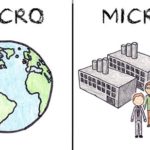OpenAI Debuts GPT-4: The Next Evolution in Artificial Intelligence
In the ever-evolving landscape of artificial intelligence, OpenAI has once again made waves with the debut of its latest flagship AI model, GPT-4. Building upon the success of its predecessors, GPT-3 and GPT-2, this new model represents a significant leap forward in the capabilities of AI technology. In this blog post, we will explore the key features of GPT-4, its potential applications, and the implications of this groundbreaking development.
The Evolution of GPT Models
OpenAI’s Generative Pre-trained Transformer (GPT) models have been at the forefront of natural language processing (NLP) research and applications. GPT-2, released in 2019, introduced the world to a powerful language model capable of generating coherent and contextually relevant text. Its successor, GPT-3, unveiled in 2020, further pushed the boundaries of AI with its ability to understand and generate human-like text across a wide range of tasks.
Now, with the launch of GPT-4, OpenAI continues to raise the bar for AI models. Leveraging the latest advancements in deep learning and neural networks, GPT-4 promises to deliver even more impressive performance and capabilities than its predecessors.
Key Features of GPT-4
One of the standout features of GPT-4 is its enhanced language understanding and generation capabilities. Thanks to its large-scale training data and sophisticated architecture, GPT-4 can grasp complex linguistic nuances, context, and tone with remarkable accuracy. This enables the model to generate text that is not only grammatically correct but also contextually relevant and coherent.
Moreover, GPT-4 boasts improved multitasking abilities, allowing it to perform a diverse set of NLP tasks with high efficiency. From language translation and summarization to question-answering and text completion, GPT-4 can excel in a wide range of applications, making it a versatile tool for developers and researchers alike.
Additionally, GPT-4 introduces advanced customization options, enabling users to fine-tune the model for specific tasks and domains. By adjusting parameters and training data, developers can tailor GPT-4 to meet the unique requirements of their projects, further enhancing its performance and utility.
Potential Applications of GPT-4
The launch of GPT-4 opens up a world of possibilities for AI applications across various industries. In the field of customer service, businesses can leverage the model to create intelligent chatbots that can interact with customers in a more human-like and personalized manner. GPT-4’s advanced language understanding capabilities can help improve customer satisfaction and streamline support processes.
In the realm of content creation, GPT-4 can assist writers, journalists, and content creators in generating high-quality articles, reports, and marketing materials. By providing valuable insights, suggestions, and even full drafts, GPT-4 can enhance productivity and creativity in the content creation process.
Furthermore, GPT-4 can be instrumental in education and training, helping students and professionals alike in language learning, writing practice, and knowledge acquisition. Its adaptive learning capabilities and interactive features make it a valuable tool for personalized learning experiences and skill development.
Implications of GPT-4
As with any groundbreaking technology, the debut of GPT-4 raises important ethical, social, and economic considerations. The increasing capabilities of AI models like GPT-4 bring up concerns about data privacy, bias, and misuse of technology. It is crucial for developers, policymakers, and society as a whole to address these challenges and ensure responsible and ethical use of AI technology.
From an economic standpoint, the widespread adoption of AI models like GPT-4 may lead to job displacement in certain industries as automation becomes more prevalent. However, it also presents opportunities for innovation, productivity gains, and new job creation in emerging fields related to AI technology.
In conclusion, the debut of OpenAI’s GPT-4 represents a significant milestone in the advancement of artificial intelligence and natural language processing. With its enhanced capabilities, versatility, and potential applications, GPT-4 has the power to revolutionize how we interact with technology and harness the power of AI for societal benefit. As we continue to explore the possibilities of AI, it is essential to approach its development and deployment with caution, responsibility, and a focus on ethical considerations.






